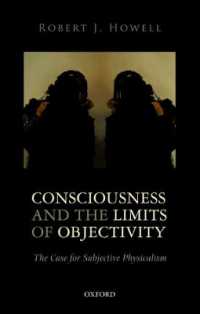Full Description
This book draws a novel triangular connection between practices of drawing, questions of posture and notions of figural agency—carefully recreating Jacques-Louis David's crafting of the human figure. Based on comprehensive research in David's rarely seen drawing notebooks, it shows how understudied procedures, such as tracings, reversals, collages, grids, and revolving sketchbooks, are highly significant for his final artworks, affecting both the structure and meaning of his historical canvases. The changing conditions under which David worked—before the French Revolution, upon release from imprisonment, and as Napoleon's First Painter—are centered here to examine notions of autonomy and activity in four of his most well-known pictures.
Forming new connections between stance and consciousness—of the artist working in his studio, the figures acting within the painting, and the political actions they represent—Mayer shows how paintings subconsciously reflect the history of their own making. Thus, her study examines the archetypical and best-known neoclassical painter in France from a different perspective, one that looks behind the finished painted surfaces and into his diversified preparatory methods. Her book offers a new view of David's drawing as a rich, dispersed, and sometimes contradictory process, where new modes of figuration are linked to questions of artistic autonomy and historical agency in times of political agitation.
Contents
Chapter 1: Beginnings: David, Drawing and the Eighteenth Century
Chapter 2: The HoratiiChapter 3: The Sabines: Cutting and Pasting
Chapter 4: The Coronation: Squaring Systems
Chapter 5: Leonidas: Sketchbooks Revolved
Chapter 6: CODA








